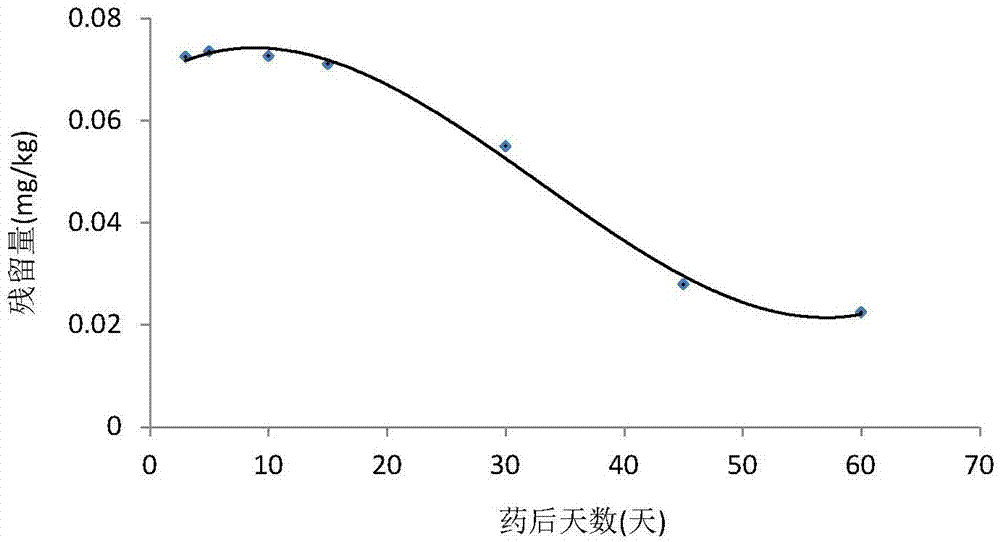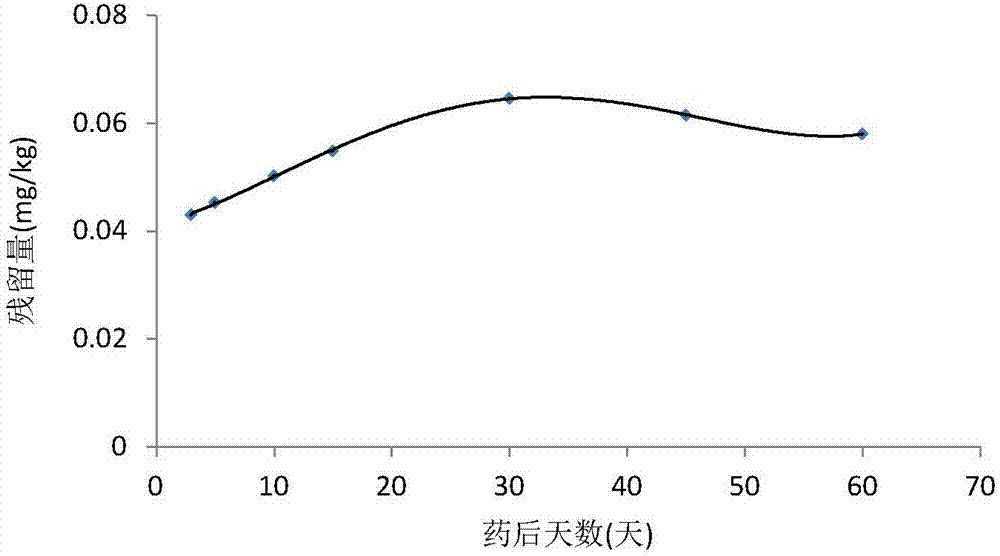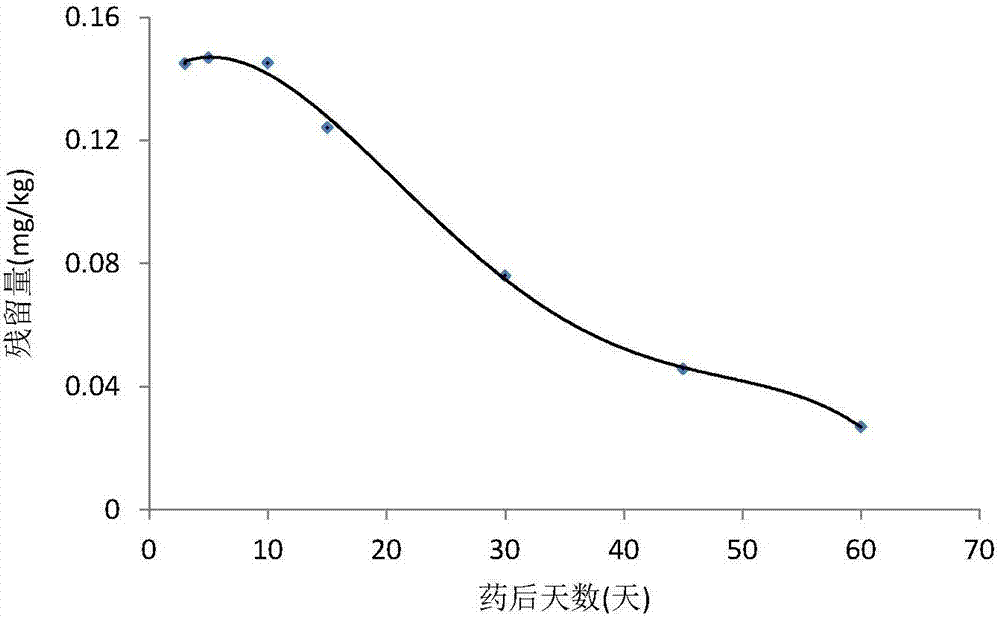Slow-release pesticide granule and preparation method thereof
A technology of slow-release granules and granules, applied in botany equipment and methods, insecticides, biocides, etc., can solve the problems of complex production of slow-release granules, high cost, and large quality differences, and achieve the goal of enhancing crop production. Effects of stress resistance, enhanced availability, and crop safety
- Summary
- Abstract
- Description
- Claims
- Application Information
AI Technical Summary
Problems solved by technology
Method used
Image
Examples
Embodiment 1
[0032] Example 1 Preparation of 2% imidacloprid sustained-release granules
[0033] Consists of the following ingredients in weight percent:
[0034] Imidacloprid 2%
[0035] River sand 85%
[0036] Xanthan Gum 1%
[0037] Silica 1.7%
[0038] Urea 0.2%
[0039] Polyvinylpyrrolidone K30 1.5%
[0040] Ethylcellulose 20 8.3%
[0041] Allura Red 0.3%
[0042] Preparation method:
[0043] (1) Imidacloprid, river sand, xanthan gum, and white carbon black are prepared into granules according to a conventional adsorption method;
[0044] (2) Add a mixed solvent of toluene: ethanol with a volume ratio of 70:30 to the reactor, add urea, polyvinylpyrrolidone, ethyl cellulose, and allura red into the reactor and heat to 50°C, stir evenly to obtain 10% film formation liquid;
[0045] (3) Add the granules of step (1) into the drum of the coating machine, heat and rotate the drum at 10 rpm to preheat; after reaching 60°C, spray the slurry, the spray amount is 140kg / min; the spray ...
Embodiment 2
[0054] Example 2 Preparation of 10% Thiazophosphine Sustained Release Granules
[0055] Consists of the following ingredients in weight percent:
[0056] Thiazophosphine 10%
[0057] Sodium dodecylbenzenesulfonate 2%
[0058] Nonylphenol ethoxylate 8%
[0059] Silica 15%
[0060] Attapulgite 47.8%
[0061] Polyvinyl alcohol 2%
[0062] Polyglutamic acid 0.2%
[0063] Polyvinylpyrrolidone K60 1%
[0064] Macrogol 8000 0.5%
[0065] Ethylcellulose 10 13.3%
[0066] Rose Bengal 0.2%
[0067] Preparation method:
[0068] (1) Phosphine thiazole, sodium dodecylbenzenesulfonate, nonylphenol polyoxyethylene ether, white carbon black, attapulgite, and polyvinyl alcohol are prepared into granules according to a conventional extrusion granulation method;
[0069] (2) Add xylene: ethanol mixed solvent with a volume ratio of 80:20 to the reaction kettle, add polyglutamic acid, polyvinylpyrrolidone, polyethylene glycol, ethyl cellulose, rose red to the reaction kettle and heat to...
Embodiment 3
[0081] Embodiment 3 Preparation content, physicochemical property determination
[0082] 3.1 Determination of the active ingredient content of imidacloprid
[0083] The mass fraction of the active ingredient imidacloprid in 2% imidacloprid sustained-release granules was determined by high performance liquid chromatography. Use U.S. Agilent high performance liquid chromatograph, with acetonitrile: water (30:70) as mobile phase, flow rate 0.5mL / min, C 18 Column (250mm×4.6mm, 5μm), room temperature, injection volume 5μL, detection wavelength 260nm, imidacloprid retention time is about 4.3min.
[0084] The prepared granules were ultrasonically dissolved in the mobile phase and filtered, degassed and filtered, and then measured; the content of imidacloprid in the 2% imidacloprid sustained-release granules prepared in Example 1 was 2.08%, which was qualified.
[0085] 3.2 Determination of active ingredient content of thiazophosphine
[0086] The mass fraction of active ingredient...
PUM
 Login to View More
Login to View More Abstract
Description
Claims
Application Information
 Login to View More
Login to View More - R&D
- Intellectual Property
- Life Sciences
- Materials
- Tech Scout
- Unparalleled Data Quality
- Higher Quality Content
- 60% Fewer Hallucinations
Browse by: Latest US Patents, China's latest patents, Technical Efficacy Thesaurus, Application Domain, Technology Topic, Popular Technical Reports.
© 2025 PatSnap. All rights reserved.Legal|Privacy policy|Modern Slavery Act Transparency Statement|Sitemap|About US| Contact US: help@patsnap.com



